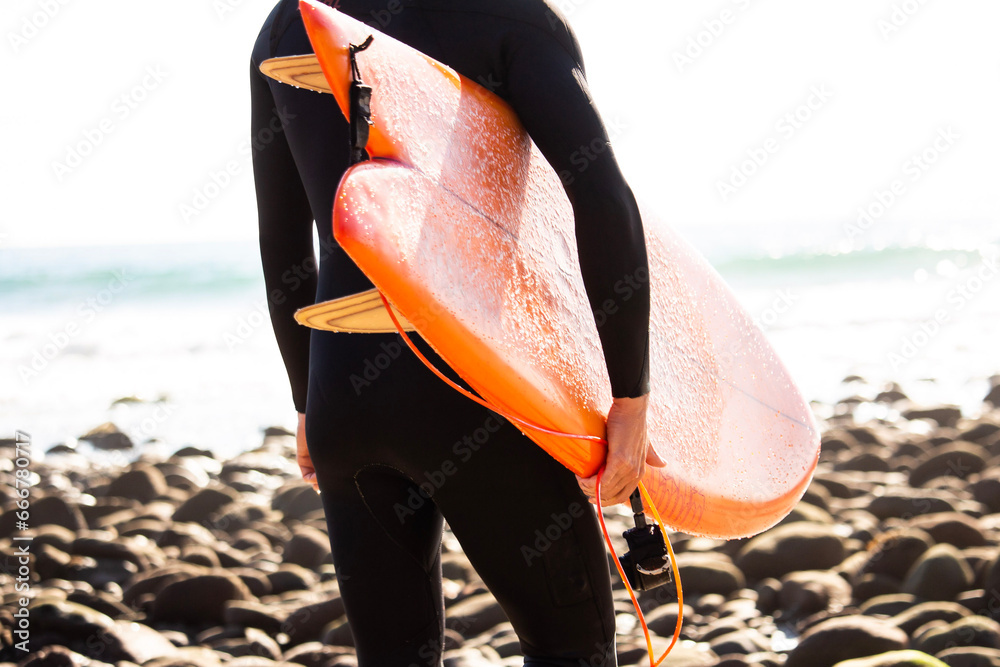
The Ultimate Surfboard Fin Sizing Guide
Master fin sizing with our comprehensive guide, weight-based charts, and AI-powered personalized recommendations
From Beginner to Pro - Get Your Size Right

Master fin sizing with our comprehensive guide, weight-based charts, and AI-powered personalized recommendations
From Beginner to Pro - Get Your Size Right
Jump to any section to learn about fin sizing factors, charts, and expert recommendations
Non-negotiable importance
Weight, volume, skill & waves
XS, S, M, L, XL explained
Weight-based sizing guide
Advanced considerations
Personalized expert advice
💬 Have specific questions? Our Expert Fin Finder chat is always available in the bottom right corner!
Fin size is arguably the most critical factor in your surfboard setup. Get it wrong, and even the best board in the world will feel sluggish, unresponsive, or downright dangerous. Get it right, and you'll unlock your board's true potential and dramatically improve your surfing performance.
When your fin size is dialed in correctly, you'll experience:
Understanding these four critical factors will help you choose the perfect fin size
Rider weight is the most important factor in fin sizing. Heavier surfers need larger fins to generate adequate hold and control, while lighter surfers need smaller fins to avoid over-finning their boards.
Fin Size by Weight Pro Tip: Your weight determines the baseline, but other factors fine-tune from there. Never ignore weight as your starting point!
Your surfboard's volume and type significantly impact fin size requirements. Higher volume boards need more fin area to maintain control, while lower volume boards need less.
Surfboard Volume Fin Size Rule: Higher volume-to-weight ratio = larger fins needed. Lower volume-to-weight ratio = smaller fins needed.
Your skill level affects how you interact with your fins and what performance characteristics you need most.
The waves you typically surf should influence your fin size choice. Different conditions require different performance characteristics.
Wave Conditions Pro Tip: If you surf varied conditions, choose fins for your most common wave type, or consider having multiple sets for different conditions.
Fin sizes are typically categorized from XS to XL - here's what each means
These are general guidelines. Actual measurements vary between brands. Always check specific fin dimensions when possible.
Use this weight-based chart as your starting point for fin selection
| Rider Weight | Recommended Size | Typical Dimensions | Performance Focus |
|---|---|---|---|
| Under 125 lbs | XS | 4.0-4.2" base, 4.3-4.5" height | Maximum maneuverability |
| 125-155 lbs | S | 4.2-4.4" base, 4.5-4.7" height | Responsive and lively |
| 155-175 lbs | M | 4.4-4.6" base, 4.7-4.9" height | Balanced all-around |
| 175-205 lbs | L | 4.6-4.8" base, 4.9-5.1" height | Good hold and drive |
| Over 205 lbs | XL | 4.8-5.0" base, 5.1-5.3" height | Maximum hold and control |
The chart gets you close, but these advanced considerations dial in your perfect size
Powerful, Steep Waves:
Go 1 size smaller for better control and release
Small, Weak Waves:
Go 1 size larger for more drive and speed generation
Variable Conditions:
Stick with chart recommendation for versatility
High-Performance Surfing:
Smaller fins for maximum responsiveness and release
Cruisy, Flow Surfing:
Larger fins for stability and smooth carving
Speed and Drive Focus:
Larger fins for maximum hold and projection
While charts and guidelines are helpful, nothing beats personalized recommendations based on YOUR specific setup, style, and conditions. Our AI Fin Expert analyzes all the factors we've discussed and provides tailored fin size recommendations just for you.
💬 Don't forget - you can also chat with our Expert Fin Finder anytime using the chat box in the bottom right corner for instant personalized fin sizing advice!
Free • Instant • Expert-Level Accuracy
Learn from others' mistakes - avoid these common fin sizing errors
Get your fin size 80% right with weight-based sizing, then fine-tune the final 20% based on your specific needs. This approach saves time and money while ensuring optimal performance.